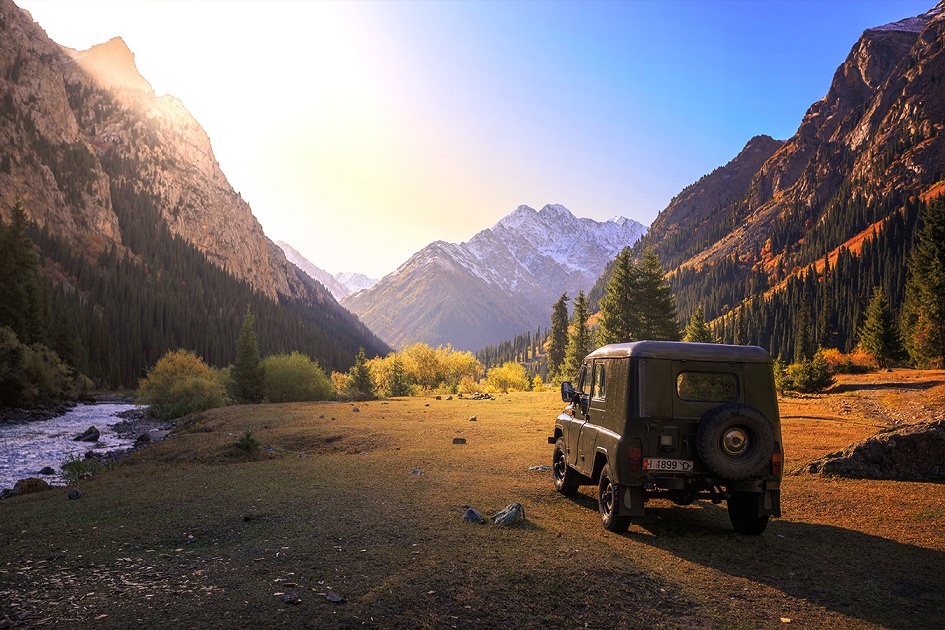Kazakhstan’s government is capitalizing on a surge of interest in and momentum created by EXPO 2017, a modern-day version of the World’s Fair, which opened earlier this month and is underway in the capital city of Astana.
Last week, officials signaled the government’s commitment to developing the tourism industry by approving a five-year plan that leverages global best practices in order to make Kazakhstani tourism competitive and an attractive area for investment.
“We must work together. Shifting this on to the shoulders of the Ministry of Culture and Sports alone will be wrong," Kazakhstan’s Prime Minister Bakytzhan Sagintayev said at Tuesday’s meeting in Astana, which included the World Tourism Organization’s Secretary-General, signifying the need for a whole-of-government approach to developing the sector and related industries.
"This Concept is planned to be implemented in two steps, 2017-2019 and 2020-2023,” said Arystanbek Mukhamediuly, Kazakhstan’s Minister of Culture and Sports, noting that the new plan is technically an upgrade from a draft that had been approved in 2014, which divided tourism into five geographical cluster areas. Under the new plan, the ministry has revised the clusters and added a sixth, which includes nature reserves and parks meant to highlight the country’s vast ecological resources and nomadic culture.
Located in both the Caspian and Central Asia regions, Kazakhstan is the world’s ninth largest country in terms of land mass and boasts almost all kinds of natural landscapes, varying from large, sunny steppes to mountain ranges and lakes.
The country’s five UNESCO-protected historical sites include the Mausoleum of Khoja Ahmed Yasawi, influential in developing and spreading Sufi Islam throughout the Turkic-speaking world. As a pioneer of popular mysticism, he founded the first Turkic Sufi order, the Yasawi, and is the earliest known Turkic poet who composed poetry in Middle Turkic.
Petroglyphs found within the Archaeological Landscape of Tamgaly, the Silk Road Routes Network of the Chang'an-Tianshan Corridor, the Saryarka – Steppe, and Lakes of Northern Kazakhstan, and Western Tien-Shan are four other UNESCO-protected sites found in Kazakhstan.
Located in the vast, arid Chu-Ili mountains, Tamgaly is home to roughly 5,000 rock carvings, or petroglyphs, dating from the second half of the second millennium BC to the beginning of the 20th century.
Saryarka, meaning “yellow range,” comprises a number of lakes and steppes in central and eastern Kazakhstan, which serve as a feeding ground for nearly 15-16 million birds migrating from Africa, Europe, and South Asia, as well as species of wildlife, including marmots and wolves.
Summer tourism is practically nonexistent without beaches, and Kazakhstan is no exception. Golden, sandy beaches are found in the Mangistau region on the eastern coast of the Caspian Sea, where the region’s capital city, Aktau, draws tourists from May through September.
The world’s fair EXPO-2017 is currently underway in Kazakhstan as the capital city Astana is playing host to a global exhibition focusing on energy, in which 115 countries are participating. Now in its third week, EXPO 2017 is expected to attract anywhere between 2.5 – 5 million tourists during its three-month run, from June 10 to September 10. Local media reported that Kazakhstan expects to welcome the 500,000th tourist this coming weekend.
According to the Travel and Tourism Competitiveness Report 2017, compiled by the World Economic Forum, Kazakhstan ranks 81 among 136 countries. Metrics used to compile the rankings include international tourist arrivals (4.6 million), international tourism inbound receipt ($1.53 billion), as well as travel and tourism revenue ($3 billion).







 Turkmen President Serdar Berdimuhamedow and British Secretary of State for Foreign Affairs, Commonwealth Affairs, and Development David Cameron dis...
Turkmen President Serdar Berdimuhamedow and British Secretary of State for Foreign Affairs, Commonwealth Affairs, and Development David Cameron dis...
 A draft resolution aimed at preventing the development and deployment of weapons of mass destruction (WMDs) in outer space, co-sponsored by Japan a...
A draft resolution aimed at preventing the development and deployment of weapons of mass destruction (WMDs) in outer space, co-sponsored by Japan a...
 Russia and Ukraine have engaged in direct negotiations facilitated by Qatar to address the exchange of children affected by the ongoing conflict.
Russia and Ukraine have engaged in direct negotiations facilitated by Qatar to address the exchange of children affected by the ongoing conflict.



